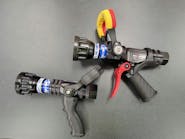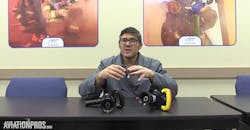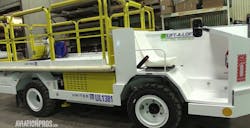Federal aviation agency to field teams to study runway safety at more than 20 US airports
WASHINGTON_Special teams of federal regulators, airline and airport personnel will be sent to study runway safety over the next two months at more than 20 U.S. airports with the most runway problems.
That was among five short-term steps agreed Wednesday at a daylong conference called by Federal Aviation Administrator Marion Blakey to address what her deputy Bobby Sturgell called "some incidents of late that concern us."
The largest of these was the pre-dawn crash of a Comair jet last Aug. 27 in Kentucky. It went down after taking off from the wrong runway, an unlit general aviation strip too short for commercial flights. All but one of 50 people aboard were killed.
Neither Sturgell nor the Federal Aviation Administration's associate administrator for safety, Nick Sabatini, would say they were aware of any more recent takeoffs from the wrong runway. Sabatini said the agency has been studying 117 reports submitted over the last decade in which pilots and flight crew members had reported confusion while taxiing.
FAA officials said they are still assembling the list of airports to be studied, but Sturgell said the Kentucky airport, which voluntarily upgraded its runway markings, would not be on it.
Blakey convened the private conference with 40 representatives of airlines, airplane manufacturers, avionics executives, FAA inspectors and air traffic controllers less than a month after the National Transportation Safety Board issued its report on the Kentucky crash. Only a portion of its recommendations has been implemented by the FAA so far.
Sturgell and Sabatini told reporters the group had agreed to these other voluntary steps:
_Improving communication and training, including adding taxiway scenarios to flight simulators used to train pilots.
_Urging that 73 large airports under orders to improve painted runway markings complete the work in the next two months rather than by the September 2008 deadline. The group also will study whether more airports should improve markings.
_Reviewing cockpit taxi and clearance procedures to reduce the tasks required of pilots while their planes are moving on the ground and to see how the instructions controllers give to planes on the way to takeoff can be improved.
_Adding air traffic controllers and safety workers to the groups that can use an FAA voluntary, nonpunitive system for reporting safety concerns.
The FAA-industry teams will "evaluate all aspects of the runway and surface environment, standard operating procedures, markings and signage" at the airports, Sturgell said. "We've seen through analysis of the data there are issues around the geometry of airports that cause confusion," such as a common areas near the ends of two runways.
Sturgell said the FAA had gone part of the way toward implementing the NTSB's recommendation that planes not be cleared for takeoff until they have finished crossing other runways. Last month, the FAA ordered that takeoff clearances should list all runways left to cross.




